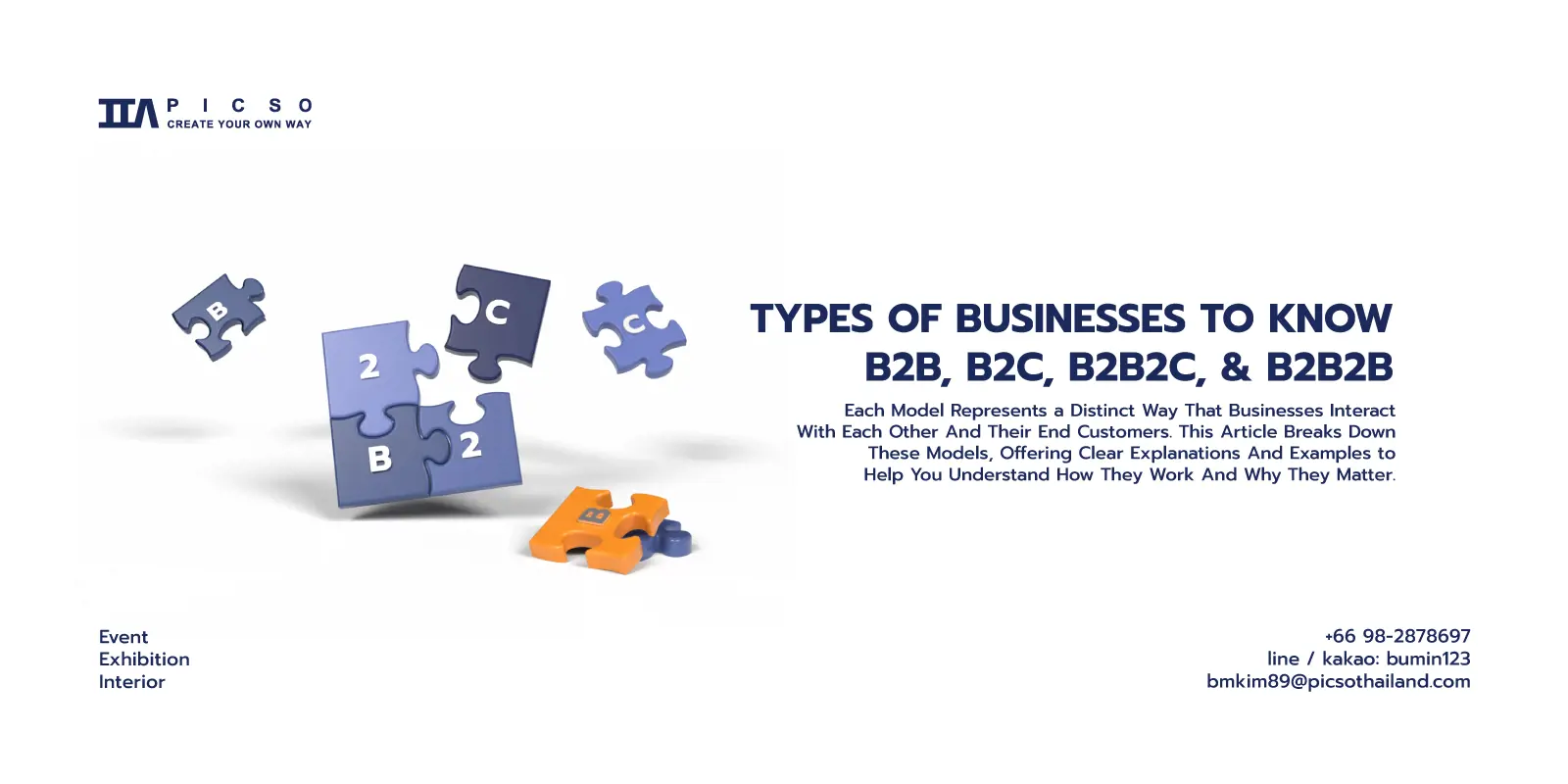


Every business has its target market, whether it's other businesses or individual consumers. These targets fall into models such as B2B (Business-to-Business), B2C (Business-to-Consumer), B2B2C (Business-to-Business-to-Consumer), and B2B2B (Business-to-Business-to-Business). Each model represents a distinct way that businesses interact with each other and their end customers, offering unique characteristics, challenges, and opportunities.
This article breaks down these models, offering clear explanations and examples to help you understand how they work and why they matter.
Understanding different business models is essential for any company looking to optimise its operations or improve its marketing strategies. It also benefits marketers aiming to understand business dynamics. Each model presents unique challenges and opportunities, and aligning your strategy with the appropriate model can significantly impact your success and market reach.
B2B (Business-to-Business) refers to transactions or interactions between companies. In this model, a business sells its products or services to another business rather than to individual consumers. B2B transactions often involve larger order volumes, longer sales cycles, and a focus on building strong, long-term relationships.
In some cases, businesses may sell their services to other businesses without focusing on long-term relationships. This falls under project-based or transactional B2B, where each interaction revolves around a single project rather than ongoing partnerships.
Example: An event planning agency (B1, the Seller) works with a technology company (B2, the Buyer) to organise a product launch event, handling everything from venue selection to logistics and marketing support.
In B2B, the focus is on addressing the specific needs of the buyer’s business, whether it’s by providing raw materials, software, or services that help the buyer operate more efficiently or meet their business objectives.
B2C (Business-to-Consumer) is the model most familiar to everyday consumers. In B2C, businesses (B, the Seller) sell products or services directly to individual consumers (C, the Buyer). This model often involves shorter sales cycles and lower order volumes compared to B2B. However, businesses can extend their relationships with consumers through subscription models, loyalty programmes, and repeat purchases, thereby fostering long-term customer retention.
Example: A cosmetic company (B) sells beauty and skincare products directly to individual consumers (C). The company markets its products to shoppers, who purchase them for personal use.
In B2C transactions, the focus is on attracting and retaining customers through competitive pricing, excellent customer service, and a seamless purchasing process.
B2B2B (Business-to-Business-to-Business) involves a business (B1) selling products or services to another business (B2), which then sells them to yet another business (B3). This model is common in industries with complex supply chains, where products or services pass through several layers of businesses before reaching the final user or market.
Example: A company that manufactures electronic components (B1) sells them to a company that assembles them into computer hardware (B2). The assembler then sells the completed hardware to a technology distributor (B3), which ultimately supplies retail stores or other businesses.
In B2B2B, the focus is on creating efficient supply chains where each business adds value to the product or service before passing it on.
B2B2C (Business-to-Business-to-Consumer) is a hybrid model where a company (B1, the Seller) sells products or services to another business (B2, the Buyer), which then sells those products or services to the end consumer (C). This model allows businesses to reach consumers indirectly by partnering with companies that already have direct access to their target market. The businesses like B1 usually, actively markets to consumers directly, even though the final sale happens through businesses like B2.
Example: A cosmetic company (B1) sells its products to a supermarket (B2), which then offers those products to its customers (C). In addition, the cosmetic company promotes its products directly to consumers through advertising and content marketing. In this scenario, the cosmetic brand reaches consumers both indirectly (via the supermarket) and directly (through its marketing efforts).
This model emphasises collaboration between businesses to effectively reach and engage the final consumer.
PICSO Company is a leader in event marketing, with deep expertise in understanding both your business and your target audience. This knowledge allows us to craft events that ensure success, no matter your business model.
We can consult with you to design an impressive event that aligns perfectly with your goals, whether you're targeting businesses (B2B, B2B2B), consumers (B2C, B2B2C), or the events by individuals like weddings or parties.
Each of these business models—B2B, B2C, B2B2C, and B2B2B—offers unique opportunities and challenges. Understanding these models helps businesses optimise their operations, improve their marketing strategies, and better engage with their target audiences, whether those audiences are other businesses or individual consumers.
![]() Together, let's craft a solution that sets your business apart. Contact PICSO today and make your next project of events, exhibitions, or interior designs truly remarkable!
Together, let's craft a solution that sets your business apart. Contact PICSO today and make your next project of events, exhibitions, or interior designs truly remarkable!
Tel: +66982878697
Line / Kakao: bumin123
Email: bmkim89@picsothailand.com
For more information and content about events, exhibitions and interior designs, you may visit and follow our channels on -
📌 Website: https://bit.ly/picsoweb
📌 Facebook: https://bit.ly/picsofb
📌 Instagram: https://bit.ly/picsoig
📌 TikTok: https://bit.ly/picsott